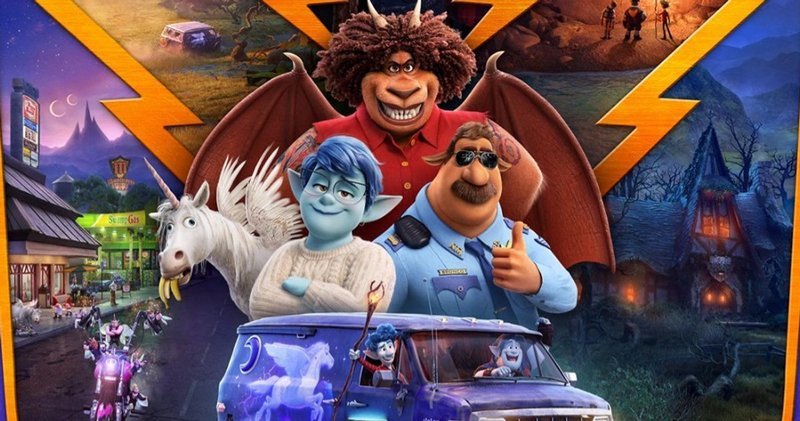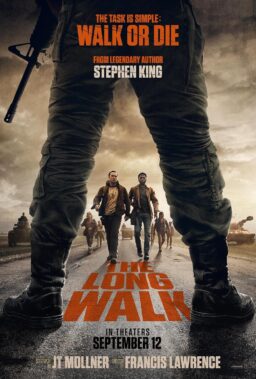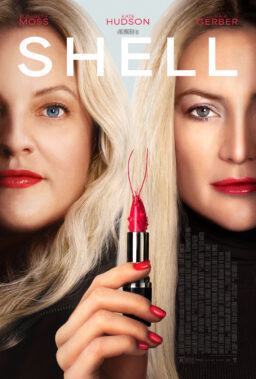Kelsey Mann’s title at Pixar is “Head of Story.” It may sound like something from the fairy tale world of “Onward,” the studio’s latest film, but as he explained to a small group of journalists in Washington D.C., he acts as support system, cheerleader, liaison, traffic cop, and keeper of the spreadsheets showing who is doing what and when to keep that long, long credit sequence list of names working in the same direction. He emphasized that Pixar, by culture and strategy, encourages everyone to share comments and suggestions. Even the comments from the top executives are guidance, not directives, and even those from the most junior staff members are carefully considered. The Head of Story has to keep all of the decisions straight and make sure everyone else does, too.
After the presentation, Travis Hopson of Punch Drunk Critics and I spoke to Mann, who told us more about his role, the film’s fantasy/game playing specialists they (of course) called The Fellowship, and the joke he loved that ended up getting cut from the film. (This interview has been slightly edited for clarity and continuity.)
What does it mean to be the Head of Story?
You’re there to support a lot of people. You’re there to support the director and the producer in making the best film possible. You’re supporting the film, but then you’re also supporting your team, and supporting the individuals and what they need in their own growth. You’re in between all these islands and you’re trying to make sure that everybody is getting along with one another because sometimes islands can go to war with one another. I’ve been on films where the story team and the writer don’t get along and that’s not helpful. So I always try to work really hard to make sure that everybody has a good, collaborative working relationship. This film was really great because all of our writers that we had come on were fantastic with the team and they really embraced the team. Some writers are used to just working by themselves, and then they come out to Pixar and you’re like, “Here’s a room full of story artists who have ideas and thoughts.” Some writers can’t adjust but these were writers who leaned into that and used the team to their benefit. All the writers we had on this film really love the story team.
You told us this was the first time the Head of Story was on board from day one, and you showed us a photograph of an empty room with just one lonely index card on the board. What was it like to start from close to nothing?
It’s a weird feeling because there’s so much potential. I felt more fear than anything, especially being in a place like Pixar. When you’re coming off the heels of so much success, it’s incredibly intimidating, you know? But I remember Brad Bird saying, “Whenever you feel that way, you just have to push that all aside and just look down at what you’re doing and try to make that as great as you can and not worry about everything else.”

There are so many wonderful details in the film, drawing from many different fantasy worlds. Were there a lot of fantasy nerds in your group?
We wanted the film to work for everyone, whether you like fantasy or not, but we also wanted to make sure that it worked for the people who really knew fantasy. So I wanted to make sure to balance the team out and to make sure that there are some people on the team who don’t know much about fantasy and may not even care because if I can get them to like the movie that’s good, right? But then I also will put people who know their stuff and so they were two people in particular brought on. Austin Madison, who is a story artist and Luis Smythe are both uber fantasy nerds in different ways because there are so many categories. There’s games, there’s movies, there’s cosplay. I helped gather a group together that we affectionately called The Fellowship to help these people who are on the crew, not just in story, but all the departments when it comes to fantasy details. Whenever [director] Dan Scanlon needed a question answered about a fantasy thing, or some idea of what this could be or what we could do here in this fantasy, he would bring it to The Fellowship and see what they could come up with. We used that group a lot.
This is the first Pixar film in a fantasy setting. How did that come about?
It was from a story point. We want to tell personal stories at Pixar and it starts with the director and their own experience and what they struggled with in life. It usually comes from a really hard question that they may not have an answer to. Dan was looking internally about his own experience and what has helped shape him. He thought about never meeting his father who died when Dan was six months old. He’s got an older brother who’s like three years older than he is and neither one of them have any memory of their dad. He thought, “Boy, what if there was a character that had that same experience, and what if they could spend one day with that person that they lost?” You want to create goals that the audience can get behind and care about and so he liked that idea and so he thought, “Well, how can I make that happen? I don’t know. Maybe a spell, maybe magic.” So that’s literally where the fantasy part came from, the story need of wanting to spend one day with somebody who passed away.

I especially loved the casual diversity of the film. It’s very inclusive and my favorite character is the mother, voiced by Julia Louis-Dreyfus. She’s not the typical mom character, always telling everyone to be careful.
That took a while to get to. We have multiple screenings, and after each screening, we can’t tackle everything. We will pick a focus like, “Okay, this screening, we really want to earn the brother’s relationship and the emotional ending, everything else we can put off to the side for now.” Sometimes we’ll categorize them as A, B, and C so we know how much time to spend because we only have so much time, right? We’ll pick certain scenes to spend more time. We can’t have everything be a priority one.
So we focused on the boys at first, but we always had Mom there and Mom involved. But in our very first versions, Mom was trying to stop the boys for the longest time. Her boyfriend Colt was really involved too and it was the two of them trying to stop the boys. Colt was also more of a jerk in the beginning and you’re like, “Why is Mom marrying this guy? He’s terrible, you know?” It wasn’t until he hired Mel Rodriguez to voice Colt and kind of sweeten the character up a little bit and we just softened him a little bit more. He’s trying to do the right thing. He is trying to stop the boys, but it’s out of concern for worrying their mother.
Once we started to solidify the boys’ storyline, then we could switch our focus and really hit the B story, which was Mom, and I remember us realizing that nobody’s going to root for Mom trying to stop the boys because we want them to meet their dad. I don’t want to have them stop, even if it is going to be difficult and they might die. I still, as an audience member, I’m like, “Go for it.” And then we came around to the idea that maybe they’re trying to help the boys and maybe they have a piece of information that the boys don’t know. And initially, we just had the scene of the Manticore in the tavern and we kind of left her there. It wasn’t really until we started casting the actors that we got Octavia Spencer and Julia Louis-Dreyfus. I remember us all thinking like, “I want to put them in a car together.”
I remember doing a drawing to kind of like try out Mom and the Manticore together. The Manticore is so huge in the car. There’s something so appealing about watching these two incredible actresses in the car together. We really liked the balance between the two boys doing their thing and these two incredible women doing their thing as the B story. We like that kind of balance.
What are some of the advantages and disadvantages of a character who is just the bottom half?
The disadvantage is knowing where the character should look to talk to them. Adding the top half really helped with that. Ian knows that the top half isn’t real but it felt more natural to look at a face. Usually there are a lot of over-the-shoulder shots, what you use for two characters talking. We have a lot of over-the-butt shots. Got a little awkward every once in a while.
Sometimes we would be so concerned with the boys that we forgot about Dad and we’re like, “Oh man Dad is there; what are we doing with Dad?”
I love Colt, the centaur cop, who is responsible for the funniest moment in the film.
I’m glad you love that. I remember I pitched that to Dan. I said, “We have to put that in there.” You know, there’s one line right before it that I still wish we hadn’t cut because he’s yelling at the boys and he we had him say, “Dang it. No, I’m putting my hoof down.” We ended up cutting it. I think Dan was trying to tighten the movie up or something; I’m so happy that the counting is in the movie. Travis Hathaway story animated that and he did such a good job because Colt kind of indicates like he’s going to count with his hand and then he does it with this feet. He’s such a brilliant animator and he nailed that joke.












